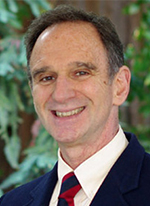
Nuclear deterrence,
Cryptography
Dr. Martin E. Hellman is an Adjunct Senior Fellow for Nuclear Risk Analysis at FAS.
Hellman received his B.E. from New York University in 1966, and his M.S. and Ph.D. from Stanford University in 1967 and 1969, all in Electrical Engineering.
Hellman was at IBM’s Watson Research Center from 1968-69 and an Assistant Professor of EE at MIT from 1969-71. Returning to Stanford in 1971, he served on the regular faculty until becoming Professor Emeritus in 1996. He has authored over seventy technical papers, ten U.S. patents and a number of foreign equivalents.
Along with Diffie and Merkle, Hellman invented public key cryptography, the technology which allows secure transactions on the Internet, including literally trillions of dollars of financial transactions daily. He has also been a long-time contributor to the computer privacy debate, starting with the issue of DES key size in 1975 and culminating with service (1994-96) on the National Research Council’s Committee to Study National Cryptographic Policy, whose main recommendations have since been implemented.
Hellman has a deep interest in the ethics of technological development. With Prof. Anatoly Gromyko of Moscow, he co-edited Breakthrough: Emerging New Thinking, a book published simultaneously in Russian and English in 1987 during the rapid change in Soviet-American relations. Breakthrough outlined how the equations of survival had changed in the nuclear age.
His current project, Defusing the Nuclear Threat, is applying quantitative risk analysis to a potential failure of nuclear deterrence. In addition to illuminating the level of risk inherent in threatening to destroy civilization in an effort to maintain the peace, this approach highlights how small changes, early in the accident chain, can reduce the risk far more than might first appear. This methodology has been endorsed by a number of prominent individuals including a former Director of the National Security Agency, Stanford’s President Emeritus, and two Nobel Laureates.
He also worked to develop an environment within the university within which students of diverse backgrounds can function to the best of their ability. This work was recognized by four teaching awards, including three from minority student organizations.
More detailed information is available on his honors and awards, his university service, and his professional and civic service.
The destructive potential of nuclear weapons is so great that decisions impacting them should be made in a fully conscious, objective manner. Unfortunately, there is significant evidence that this is not the case. One of my Stanford course handouts1 lists almost two dozen assumptions which underlie our nuclear posture, but warrant critical re-examination. This column applies […]
When I read Eric Schlosser’s acclaimed 2013 book, Command and Control: Nuclear Weapons, the Damascus Accident, and the Illusion of Safety, I found a tantalizing revelation on pages 170-171, when it asked, “What was the ‘acceptable’ probability of an accidental nuclear explosion?” and then proceeded to describe a 1957 Sandia Report, “Acceptable Premature Probabilities for Nuclear Weapons,” which dealt […]
The crisis in Ukraine continues to simmer, but thankfully has not yet boiled over. Here are some of the developments since I last wrote on this topic, followed by some thoughts on what is needed to minimize the risk of the conflict spiraling out of control. Former Ukrainian President Leonid Kuchma assessed the situation as follows: Russia […]
Today’s news shows a heightened nuclear risk due to a dangerous feedback process at work in the Ukraine. The New York Times’ page 1 ominous headline was, “Striking Town, Ukraine Forces Defy Warning,” and the Wall Street Journal echoed the danger, “Ukraine Sends Troops East As Pro-Russia Forces Strike.” Is the Ukrainian crisis spiraling out of […]
The quantitative risk analysis approach to nuclear deterrence not only allows a more objective estimate of how much risk we face, but also highlights otherwise unforeseen ways to reduce that risk. The current crisis in Ukraine provides a good example. Last Fall, I met Daniel Altman, a Ph.D. candidate at MIT, who is visiting Stanford’s Center for International […]